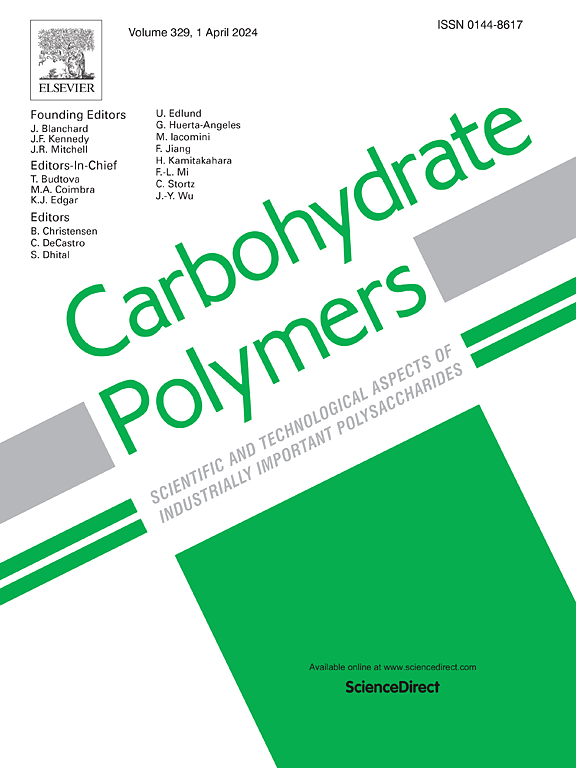Formation of dimers delayed alginate degradation in fecal microbiota fermentation
IF 10.7
1区 化学
Q1 CHEMISTRY, APPLIED
引用次数: 0
Abstract
The present study was to examine the dimer formation of two alginate chains and its degradation in gut microbiota using an in vitro colon fermentation model. The most rapid degradation stage of guluronate in alginate was from 6 h to 24 h (1.68 μg/mL/h), while guluronate in dimers was from 24 h to 36 h (1.69 μg/mL/h). The degradation extent of alginate (97.40 %) was remarkably higher than that of dimers (84.20 %) in 48 h fermentation. Fecal microbiota randomly cleaved alginate into discrete mannuronate blocks (M-blocks), guluronate blocks (G-blocks), or M/G G-blocks. In contrast, dimers were sequentially cleaved into M-blocks before the crosslinked G-blocks. Approximately 25 % of crosslinked G-blocks survived the 48-h fermentation. Furthermore, three Bacteroides spp. strains could collaboratively degrade M-blocks and then crosslinked G-blocks in dimers sequentially. Collectively, the crosslinked G-blocks impeded the dimer degradation by fecal microbiota, presenting a slower degradation rate and a lesser degradation extent.

求助全文
约1分钟内获得全文
求助全文
来源期刊

Carbohydrate Polymers
化学-高分子科学
CiteScore
22.40
自引率
8.00%
发文量
1286
审稿时长
47 days
期刊介绍:
Carbohydrate Polymers stands as a prominent journal in the glycoscience field, dedicated to exploring and harnessing the potential of polysaccharides with applications spanning bioenergy, bioplastics, biomaterials, biorefining, chemistry, drug delivery, food, health, nanotechnology, packaging, paper, pharmaceuticals, medicine, oil recovery, textiles, tissue engineering, wood, and various aspects of glycoscience.
The journal emphasizes the central role of well-characterized carbohydrate polymers, highlighting their significance as the primary focus rather than a peripheral topic. Each paper must prominently feature at least one named carbohydrate polymer, evident in both citation and title, with a commitment to innovative research that advances scientific knowledge.
 求助内容:
求助内容: 应助结果提醒方式:
应助结果提醒方式:


